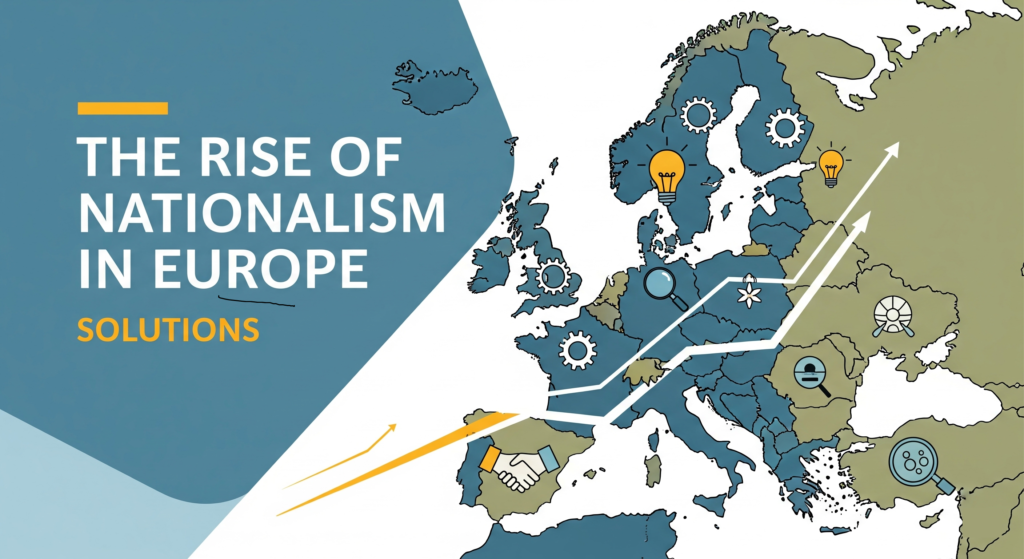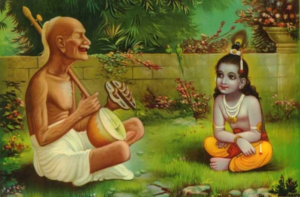Here are the comprehensive The Rise of Nationalism in Europe Solutions, based primarily on the NCERT textbook for the CBSE Class 10 History syllabus, Chapter 1. These solutions cover all important in-text and end-of-chapter questions, providing clear, step-by-step answers aligned with the concepts explained in the textbook. Designed to help you understand and apply each topic effectively, the solutions include simplified explanations, accurate historical references, and well-structured answers for short and long questions. Whether you are revising for exams or practicing for a deeper understanding, this solution guide is your quick and reliable companion.

EXCERCISES
Write in brief
1. Write a note on:
a) Guiseppe Mazzini
b) Count Camillo de Cavour
c) The Greek war of independence
d) Frankfurt parliament
e) The role of women in nationalist struggles
Answer:
a) Guiseppe Mazzini: An Italian revolutionary who was a member of the secret society Carbonari. After being exiled, he founded Young Italy and Young Europe with the belief that nations were God-given natural units of mankind. He advocated for the unification of Italy into a single republic.
b) Count Camillo de Cavour: The Chief Minister of Sardinia-Piedmont, Cavour was a diplomatic statesman who led the Italian unification movement. He formed a strategic alliance with France, which was instrumental in defeating Austrian forces and liberating northern Italy.
c) The Greek war of independence: A nationalist struggle by the Greek people against the Ottoman Empire that began in 1821. It was supported by Greeks in exile and West Europeans who admired ancient Greek culture. The war concluded with the Treaty of Constantinople of 1832, which recognized Greece as an independent nation.
d) Frankfurt parliament: An all-German national assembly formed by middle-class professionals in 1848. Its goal was to create a unified German nation with a constitution. It failed when the Prussian king rejected the crown, leading to its dissolution.
e) The role of women in nationalist struggles: Women were active participants in nationalist movements, forming political associations, founding newspapers, and participating in demonstrations. However, despite their efforts, they were often denied political rights and suffrage.
2. What steps did the French revolutionaries take to create a sense of collective identity among the French people?
Answer:
The French revolutionaries took the following steps:
- Promoted the ideas of la patrie (the fatherland) and le citoyen (the citizen).
- Adopted a new tricolour flag.
- Renamed the Estates General the National Assembly.
- Composed new hymns, took oaths, and commemorated martyrs in the name of the nation.
- Established a centralized administrative system with uniform laws.
- Abolished internal customs duties and standardized weights and measures.
- Promoted French as the common language, discouraging regional dialects.
3. Who were Marianne and Germania? What was the importance of the way in which they were portrayed?
Answer:
Marianne was the female allegory of the French Republic, and Germania was the female allegory of the German nation. They were portrayed to give an abstract idea—the nation—a tangible, personified form. This helped to inspire a sense of unity and national loyalty. Marianne symbolized liberty and the Republic, while Germania, often wearing a crown of oak leaves, symbolized heroism.
4. Briefly trace the process of German unification.
Answer:
The process of German unification was led by Prussia under its Chief Minister, Otto von Bismarck. Following the failure of the Frankfurt Parliament, Bismarck used a policy of “blood and iron” through three wars over seven years against Denmark, Austria, and France. These wars resulted in Prussian victories and the consolidation of German states. The unification culminated in January 1871, when the new German Empire was proclaimed with the Prussian king, Kaiser William I, as the emperor.
5. What changes did Napoleon introduce to make the administrative system more efficient in the territories ruled by him?
Answer:
Napoleon introduced several changes, codified in the Civil Code of 1804:
- Abolished all privileges based on birth.
- Established equality before the law and secured the right to property.
- Simplified administrative divisions and abolished the feudal system.
- Freed peasants from serfdom and manorial dues.
- Removed guild restrictions and standardized weights and measures and currency.
Discuss
1. Explain what is meant by the 1848 revolution of the liberals. What were the political, social and economic ideas supported by the liberals?
Answer:
The 1848 Revolution of the Liberals refers to a series of widespread revolts across Europe led by the educated middle classes. These revolutions were driven by liberal nationalist sentiments and aimed to overthrow existing monarchies and establish nation-states.
The liberal ideas supported by the revolutionaries were:
- Political: They demanded a constitution, parliamentary representation, and freedom of the press and association. They sought to end autocracy and clerical privileges.
- Social: They advocated for individual freedom and equality before the law, though this often did not extend to universal suffrage for all citizens.
- Economic: They supported the freedom of markets and the abolition of state-imposed restrictions on the movement of goods and capital. They also sought to end aristocratic privileges and serfdom.
2. Choose three examples to show the contribution of culture to the growth of nationalism in Europe.
Answer:
- Romanticism: This cultural movement emphasized emotion, intuition, and mystical feelings over reason and science. Romantic artists and poets, such as Johann Gottfried Herder, believed that a true German culture could be discovered among the common people (das Volk). They collected folk songs, folk poetry, and folk dances to popularize a shared national spirit.
- Language: Language played a crucial role in creating a national identity, particularly in countries like Poland. Despite Russian occupation, Poles used language as a weapon of national resistance. Polish was used in church gatherings and all religious instruction, and its use was seen as a symbol of the struggle against foreign domination.
- Music and Art: Composers and artists used their work to celebrate the nation’s past and create a sense of national pride. For instance, Frédéric Chopin, a Polish composer, used folk dances like the polonaise and mazurka to turn them into symbols of the nationalist struggle against Russian rule.
3. Through a focus on any two countries, explain how nations developed over the nineteenth century.
Answer:
- Germany: Germany was a collection of fragmented states. The movement for unification was led by Prussia under its Chief Minister, Otto von Bismarck. Bismarck used a policy of “blood and iron”—a series of three wars over seven years—to unite the German states. The final step was the proclamation of the German Empire in 1871, with the Prussian king as the emperor, marking the creation of a unified nation-state.
- Italy: Italy was also politically fragmented into various states, with the north under Austrian Habsburgs, the center ruled by the Pope, and the south by the Bourbon kings of Spain. The unification was a long and complex process. It began with the efforts of revolutionaries like Giuseppe Mazzini, followed by the diplomatic and military leadership of Count Camillo de Cavour and the armed forces of Giuseppe Garibaldi. The unification was largely completed in 1861 and finalized in 1870.
4. How was the history of nationalism in Britain unlike the rest of Europe?
Answer:
The history of nationalism in Britain was fundamentally different from the rest of Europe because it was not the result of a sudden revolution or a nationalist movement. Instead, it was a long-drawn-out process that involved the establishment of a British nation-state through the gradual expansion of English influence. The various acts and treaties, like the Act of Union (1707), forcibly brought Scotland and Ireland under the British Parliament’s control, creating a “British nation.” This nation was dominated by English culture, language, and institutions, suppressing the unique identities of the other nations within the union.
5. Why did nationalist tensions emerge in the Balkans?
Answer:
Nationalist tensions in the Balkans emerged due to a combination of factors:
- Disintegration of the Ottoman Empire: The Ottoman Empire, which controlled a large part of the Balkans, was weakening. This created an opportunity for the diverse ethnic groups in the region to assert their independence.
- Spread of Romantic Nationalism: The spread of the ideas of romantic nationalism led to the demand for independence among the Balkan peoples, who wanted to form their own nation-states based on their distinct ethnicities and histories.
- Intense Rivalries: As the different Balkan groups fought to define their identities and win independence, they became intensely jealous of each other. Each state wanted to expand its territory at the expense of others, leading to fierce conflicts.
- Great Power Rivalry: Major European powers like Russia, Germany, England, and Austria-Hungary were vying for control over the Balkans for trade and military influence. This power struggle further intensified the nationalist tensions in the region.

